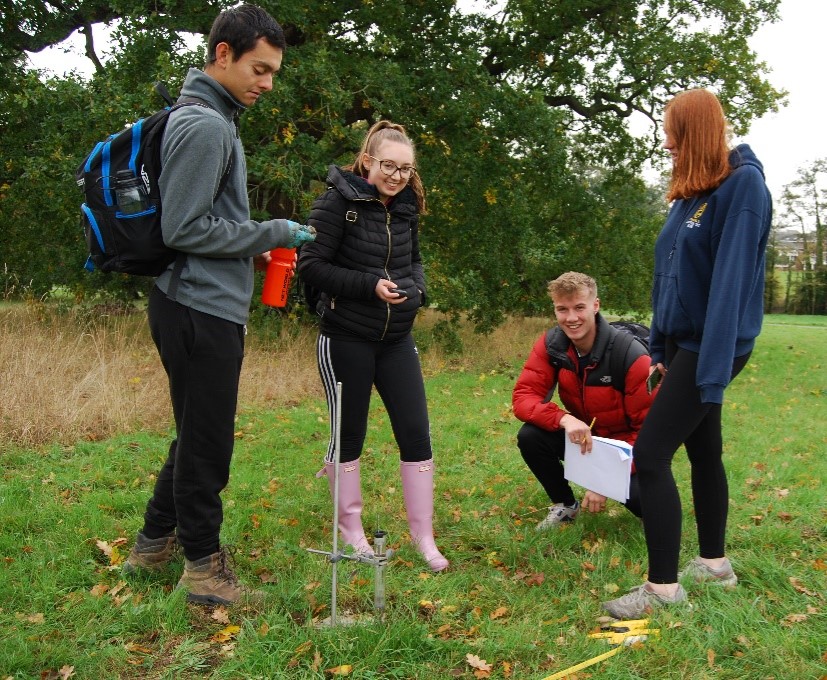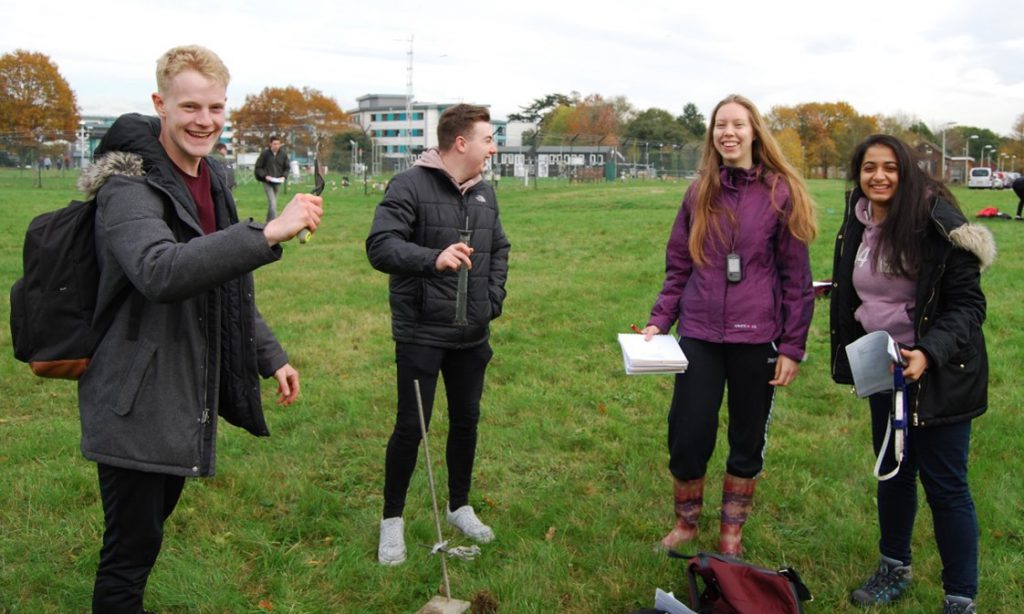Anjali Mehta Chandar: a.m.chandar@reading.ac.uk
Charlie Waller Institute, School of Psychology and Clinical Language Sciences
Overview
Our vocational postgraduate courses in Cognitive Behavioural Therapy include University Directed Learning (UDL) days that are completed within the placement setting (e.g. their NHS trust). A qualitative student feedback survey allowed us to collaboratively adapt this format, with favourable outcomes in how interesting, enjoyable and useful the students found the day.
Objectives
Our objectives were as follows:
-To ascertain how interesting, enjoyable and useful the UDL days were, as perceived by the students, based on pedagogical findings that students engage best and are most satisfied, if these characteristics are met (e.g. Ramsden, 2003).
-To make improvements to the UDL days based on qualitative student feedback.
-To ascertain whether our improvements had made the UDL days more interesting, enjoyable and useful, as perceived by the next cohort of students.
Context
The Educational Mental Health Practitioner (EMHP) and Children’s Wellbeing Practitioner (CWP) programmes are one-year vocational postgraduate courses. The students are employed by an NHS trust, local authority or charity, and study at UoR to become qualified mental health practitioners.
UDL days make up a small proportion of the teaching days. They are self-guided teaching days, usually containing elements of e-learning, designed to complement and consolidate face to face teaching (live or remote). A combination of learning methods, including e-learning, is shown to be effective in increasing clinical skills (e.g. Sheikhaboumasoudi et al., 2018).
UDL days had been poorly received by our two 2019/2020 cohorts, according to feedback in the student rep meetings and Mentimeter feedback after each UDL e.g. comments included: ‘there was too much [content] for one day’, ‘I felt pressured to fill [the form] out rather than focussing on the readings themselves’ and ‘[the reflective form] was too long and too detailed’. Whilst this gave us some ideas on changes to make, I was aware of the low completion rates of the Mentimeter feedback. Therefore, to hear from more voices, we decided to create a specific feedback survey about the UDLs to help us make amendments in a collaborative way.
Implementation
We started by creating a survey for the current students to ascertain their views on how interesting, enjoyable and useful the UDL days were. We also had qualitative questions regarding what they liked and disliked and ideas for specific improvements.
I then led a meeting with my course team to explore the key findings. We agreed to make several changes based on the specific feedback, such as:
– variety of activities (not purely e-learning, but roleplays, videos, self-practice self-reflection tasks, group seminars run by lecturers, etc, to provide a more engaging day)
– fewer activities (we aimed for one main activity for every 1-1.5 hours to manage workload demands)
– an option to complete the programme’s reflective form (designed to be more simple, by asking them to provide their own notes on each task) or provide their notes in a format of their choice (e.g. mindmaps, vlogs, etc) to increase accessibility.
– share these reflections on a discussion board for other students and the lecturer to comment on.
We were unable to implement these changes to the current cohort as they had finished all their UDL days in the timetable, so made the changes for the following cohorts in 2020/2021.
We then sought their feedback via a new survey to ascertain their views on how interesting, enjoyable and useful the UDLs are, with additional questions relating to specific feedback on the new elements.
Impact
The survey results for the newer cohorts were much more positive than the original cohort, after changes were made to the UDL format.
There was a significant increase in how interesting, enjoyable and useful the students found the days.
The trainees also largely agreed that the UDLs had an appropriate workload, e.g. one task per 1-1.5 hours.
They also largely agreed that UDLs included interactive and varied tasks. This finding is in contrast to some of the aforementioned literature of the importance of e-learning, and it must be remembered that too much e-learning can be less engaging for trainees.
The students also praised the simple reflective form as a helpful tool, and many appreciated the option to submit notes in their own preferred way.
Although we neglected to explore the role of the lecturer feedback in the new UDL survey, research shows that this makes for a more engaging e-learning session (Dixson, 2010), and may explain why the UDLs were now more favourable.
Moreover, the process of collecting data from the students via a feedback form seemed effective, in that we used feedback to adapt the specific teaching method, thus improving student satisfaction. Pedagogical research shows the importance of using qualitative questions (instead of, or as well as, quantitative methods) to elicit student feedback (Steyn et al., 2019).
Reflection
Overall, this redesign was successful, which may be down to the fact we used the student voice to make meaningful changes. This is in line with Floden’s (2017) research that student feedback can help to improve courses.
Furthermore, the changes we have made are in line with effective practice amongst other courses and universities, e.g. appropriate workload (Ginn et al., 2007), student choice of discussion format (Lin & Overbaugh, 2007), accessibility of resources (Mahmood et al., 2012) and lecturer interaction (Dixson, 2010).
There is a possible limitation in this case study, in that our more recent cohorts are generally happier on the course, and therefore may be more positive about the UDL. In future projects, it would be useful if we can notice themes within module evaluation/student rep meetings earlier, to then elicit specific survey feedback earlier in the course and make amendments sooner, allowing feedback from the same cohort.
In future variations of the survey, I would also wish to explicitly ask how trainees find sharing reflections on the Blackboard discussion groups, as this is one change we had not elicited feedback on.
Follow Ups
We have continued to utilise these changes in the UDL format with future cohorts, e.g. reduced workload, variety of activities, simplified forms, choice of discussion format and lecturer interaction. We no longer receive concerns about these days in the student rep meetings since the original cohort. The Mentimeter feedback at the end of each UDL is generally positive, with one person recently commenting: ‘this was a very engaging day’.
References
References:
Dixson, M. D. (2010). Creating effective student engagement in online courses: What do students find engaging?. Journal of the Scholarship of Teaching and Learning, 1-13.
Flodén, J. (2017). The impact of student feedback on teaching in higher education. Assessment & Evaluation in Higher Education, 42(7), 1054-1068.
Ginns, P., Prosser, M., & Barrie, S. (2007). Students’ perceptions of teaching quality in higher education: The perspective of currently enrolled students. Studies in higher education, 32(5), 603-615.
Lin, S. Y., & Overbaugh, R. C. (2007). The effect of student choice of online discussion format on tiered achievement and student satisfaction. Journal of Research on technology in Education, 39(4), 399-415.
Mahmood, A., Mahmood, S. T., & Malik, A. B. (2012). A comparative study of student satisfaction level in distance learning and live classroom at higher education level. Turkish Online Journal of Distance Education, 13(1), 128-136.
Ramsden, P. (2003). Learning to teach in higher education. Routledge.
Sheikhaboumasoudi, R., Bagheri, M., Hosseini, S. A., Ashouri, E., & Elahi, N. (2018). Improving nursing students’ learning outcomes in fundamentals of nursing course through combination of traditional and e-learning methods. Iranian journal of nursing and midwifery research, 23(3), 217.
Steyn, C., Davies, C., & Sambo, A. (2019). Eliciting student feedback for course development: the application of a qualitative course evaluation tool among business research students. Assessment & Evaluation in Higher Education, 44(1), 11-24.
Links
CWI website: https://sites.reading.ac.uk/charlie-waller-institute/


